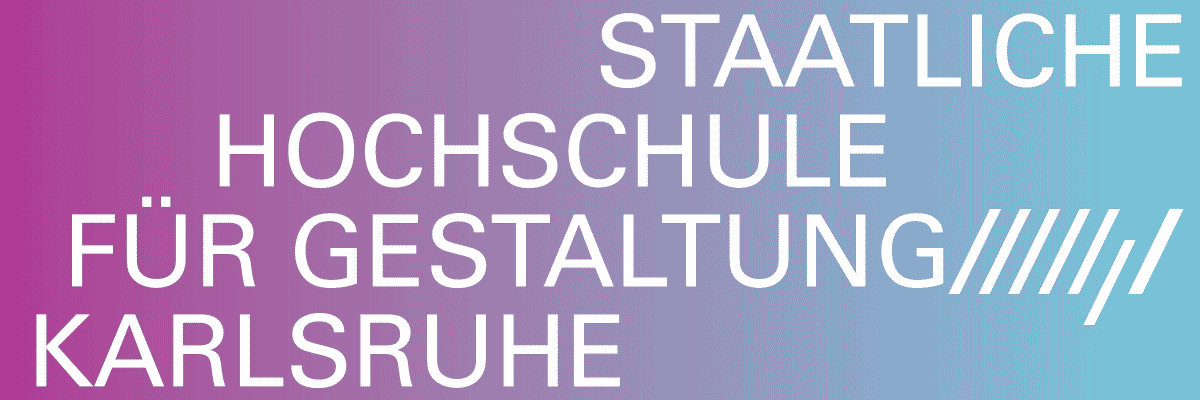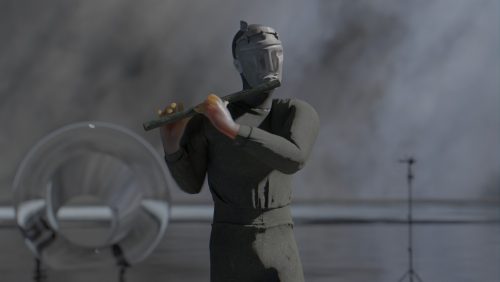
Mimmo Haraditiohadi, Golnaz Hosseini, Leah Nehmert and Arnaud Sancosme
Of Rabbits and Ducks
Project Info
- 💙 Kunsthaus Langenthal
- 💚 Marius Quiblier
- 🖤 Mimmo Haraditiohadi, Golnaz Hosseini, Leah Nehmert and Arnaud Sancosme
- 💜 Marius Quiblier
- 💛 Cedric Mussano
Share on

«Of Rabbits and Ducks», 2025. Exhibition view Kunsthaus Langenthal. Photo: Cedric Mussano, Kunsthaus Langenthal. Courtesy: the artist.
Advertisement

Golnaz Hosseini, Balaklava, 2024. Exhibition view Kunsthaus Langenthal. Photo: Cedric Mussano, Kunsthaus Langenthal. Courtesy: the artist.

Mimmo Haraditiohadi, Abstraktes Bild (Brettspiel), 2024; Leah Nehmert, Journal de Bord, since 2021. Exhibition view Kunsthaus Langenthal. Photo: Cedric Mussano, Kunsthaus Langenthal. Courtesy: the artists.

Leah Nehmert, Journal de Bord, since 2021. Exhibition view Kunsthaus Langenthal. Photo: Cedric Mussano, Kunsthaus Langenthal. Courtesy: the artist.

Mimmo Haraditiohadi, Abstraktes Bild (Brettspiel), 2024. Exhibition view Kunsthaus Langenthal. Photo: Cedric Mussano, Kunsthaus Langenthal. Courtesy: the artist.

Golnaz Hosseini, Jahan Khar, 2025; Arnaud Sancosme, Duck out, 2025. Exhibition view Kunsthaus Langenthal. Photo: Cedric Mussano, Kunsthaus Langenthal. Courtesy: the artists.

Arnaud Sancosme, Un instant je crus me retrouver à bord du transsibérien, 2025; Arnaud Sancosme, Duck out, 2025. Exhibition view Kunsthaus Langenthal. Photo: Cedric Mussano, Kunsthaus Langenthal. Courtesy: the artist.

Arnaud Sancosme, Un instant je crus me retrouver à bord du transsibérien, 2025. Exhibition view Kunsthaus Langenthal. Photo: Cedric Mussano, Kunsthaus Langenthal. Courtesy: the artist.

Arnaud Sancosme, Duck out, 2025. Exhibition view Kunsthaus Langenthal. Photo: Cedric Mussano, Kunsthaus Langenthal. Courtesy: the artist.

Mimmo Haraditiohadi, Teller leer, 2025; Bauch voll, 2025; Ziel erreicht, 2024. Exhibition view Kunsthaus Langenthal. Photo: Cedric Mussano, Kunsthaus Langenthal. Courtesy: the artist.

«Of Rabbits and Ducks» exhibition view Kunsthaus Langenthal, 2025. Photo: Cedric Mussano, Kunsthaus Langenthal. Courtesy: the artist.

Leah Nehmert, La nuit n’est jamais complète, 2025; Ballare Sotto Le Stelle, 2024. Exhibition view Kunsthaus Langenthal. Photo: Cedric Mussano, Kunsthaus Langenthal. Courtesy: the artist.

Mimmo Haraditiohadi, Senkrechtes Schiff (Series), 2024. Exhibition view Kunsthaus Langenthal. Photo: Cedric Mussano, Kunsthaus Langenthal. Courtesy: the artist.

«Of Rabbits and Ducks» Ausstellungsansicht Kunsthaus Langenthal, 2025. Photo: Cedric Mussano, Kunsthaus Langenthal. Courtesy: the artists.

Golnaz Hosseini, Pliers, 2023. Exhibition view Kunsthaus Langenthal. Photo: Cedric Mussano, Kunsthaus Langenthal. Courtesy: the artist.

Arnaud Sancosme, Souvenir pack I-IV, 2025. Exhibition view Kunsthaus Langenthal. Photo: Cedric Mussano, Kunsthaus Langenthal. Courtesy: the artist.

Arnaud Sancosme, Souvenir pack I-III, 2025. Exhibition view Kunsthaus Langenthal. Photo: Cedric Mussano, Kunsthaus Langenthal. Courtesy: the artist.

Leah Nehmert, A Two Day Hike On The Moon, 2025; Mimmo Haraditiohadi, Senkrechtes Schiff (Vandyckbraun, Zinnoberrot, Titanweiss), 2024. Exhibition view Kunsthaus Langenthal. Photo: Cedric Mussano, Kunsthaus Langenthal. Courtesy: the artists.

Leah Nehmert, A Lots Gonna Change, 2023; Guarire con i colori, 2025. Exhibition view Kunsthaus Langenthal. Photo: Cedric Mussano, Kunsthaus Langenthal. Courtesy: the artist.

Arnaud Sancosme, Entre Chien et Loup, 2025. Exhibition view Kunsthaus Langenthal. Photo: Cedric Mussano, Kunsthaus Langenthal. Courtesy: the artist.
Under the title "Which animals are most similar to each other? - Rabbit and duck" , a German satirical magazine depicted the rabbit-duck illusion for the first time in 1892. In one and the same illustration, the long ears of a rabbit on the one hand and the pointed beak of a duck on the other can be made out around a focused eye. The two animals can never be seen at the same time and so the perception of a shape is constantly changing when looking at a socalled Kippfigur. The philosopher Ludwig Wittgenstein stated that the experience of such a figure is an individual experience of duality and disorientation. Although the representation itself remains unchanged at all times, an individual experiences a recurring reversal in their own perception. In reference to this phenomenon, Kunsthaus Langenthal‘s exhibition Of Rabbits and Ducks brings together four young painters living in Switzerland who, in different ways, play with the boundary between loss of orientation and the function of representation within a formal approach to painting. At the core of the exhibition lies the painted form and the search for a precise threshold where an immediate experience of painting gives way to individual association with a world outside the canvas. Recurring is the idea of a loss of orientation through tipping points, which, like the rabbit-duck dilemma, never allow for any real clarity. Contrary to many current tendencies towards absolute discourses, the exhibition Of Rabbits and Ducks therefore speaks a more abstract (visual) language and unites four different perspectives in a mutual dialog. It reveals a reflection on human memory, hopes and dreams, fears and the collective and individual circumstances that allow us to recognize different things in an identical form.
The works of Golnaz Hosseini (*1990, Tehran) are often created in series and make recurring references to one another. Her canvases mix organic sections with monochrome areas of color and powerful brushstrokes. Not least through the continuous use of strong signal colors, the depicted subjects almost claim to be unmistakable. Yet the stories and figures of these figures seem to evolve from picture to picture, relativizing or even rejecting an original understanding. A hypnotic depth in Hosseini‘s colors, which the artist produces exclusively herself and applies in thin layers in a lengthy process, also contributes to a loss of orientation. The four large-format works that occupy the corridor on the second floor illustrate this transformative-immersive character. The handles of the pliers in Pliers (Dyptich) (2024) form into diamonds or heart-like shapes. The human aspect of the form, which breaks with a strictly graphic concept, can also be inferred in particular in the dialogue with the later work Sci-ssors (2024), where two blue eyes can be recognized or red blobs are reminiscent of bloodstains. Conversely, the figure in Balaklava (2024) appears surprisingly flat in its size and force, possibly incapacitated. In general, the act of free association and remembrance plays an important role in Hosseini‘s work. Thus Pliers (2023) also refers to the beginning of the exhibition and our immediate past, alongside modified forms and colors from an everyday life.
In his work, Arnaud Sancosme (*1995, Geneva) searches for a reduction to the essential in gesture and representation. Within this research, the content of symbols, the motif and the materiality itself is examined and renegotiated. In the process, sensitive reflections meet a stringent handling of painting, whereby a peculiar interplay between surface and depth reveals numerous tipping points. The series Un petit monde parfait (2023), for example, is reminiscent of fences in a shower of confetti. Like the stickers in Souvenir Pack I-IV (2025), the scraps of paper here merge with their background, seemingly inseparable from one another, stripped of any three-dimensionality. In Room 13, too, the form itself, which Sancosme lends to the paintings through the practice of “shaped canvas”, fires up a new reading of the latter. New corners and edges open up here and a direct reference to the architecture of the Kunsthaus Langenthal. The works Rabbit Hole (2025), Un instant je crus me retrouver à bord du transsibérien (2025), Duck out (2025) and Untitled (2025) are from a new series by the artist which, in contrast to the rough surface of the canvas, reference water-repellent panel coverings from the interior of private and commercial spaces such as a bathroom or a butcher‘s shop.
The phenomenon of pareidolia - the recognition of objects and faces in landscapes or patterns - is a recurring starting point in the painting of Mimmo Haraditiohadi (*1999, Basel). The series Senkrechtes Schiff (2024) contains three large-format paintings that combine graphic aspects and strong contrasts with monochrome color surfaces and a strong painterly stroke. The subject of the ship - for the artist a hopeful symbol of setting sail for new waters - is placed here in an uncertain position, in the glaring light of a moon that could also be a sun, or the eye of a sideways portrait. The faces of the men depicted in Teller Leer, Bauch voll, Ziel erreicht (2025) appear indignant, even grimacing - visibly disoriented in an ambiguous overall situation. They are objective observers and self-portraits at the same time and find themselves in a role between observation and commentary - always with reference to the artist‘s immediate surroundings. Two of the three works were created from overpaintings of discarded pictures, whereby “the previous” can be guessed at in the relief and the partly still visible strokes of earlier attempts. Aspects of remembering, forgetting and recognition are also addressed in Abstraktes Bild (Brettspiel) (2024). Inspired by a game designed to help people suffering from dementia not to lose language and humor, the painting explores the interface between symbolism and the formal experience of color field painting.
In her painting, Leah Nehmert (*1994, Geneva) explores the nature of the medium and its ambiguity while dealing with questions of the unconscious and the individual’s projections. A bright, shimmering light is a recurring protagonist in Nehmert‘s works and also lends earthy tones a luminous effect. Here, figurative elements such as animals or fabulous figures meet abstract organic forms and landscapes as well as grid lines and non-representational surfaces. In the Journal de Bord series (since 2021) - which involves the production of at least one painting in the same format every month - a sensual experience of abstract painting is mixed with the insights of a protocol-like documentation of an individual environment in constant change. The artist worked on the three works of the same format in room 12 on the floor of her studio, whereby the constant circulation around the respective work entails a desired loss of control and orientation. In the style of M.C. Escher‘s impossible figure, surfaces and subjects collide in A Lots Gonna Change (2023), making a three-dimensional understanding of space impossible. As in Guarire con i colori (2025), a mesmeric depth is achieved by a hidden and yet omnipresent light source in the background. In general, Nehmert‘s painting can be understood as a constant shift between micro- and macro-perspective, between the infinitely small and a wide view into the distance, as in La nuit n‘est jamais complète (2025) or A Two Day Hike On The Moon (2024).
Marius Quiblier




